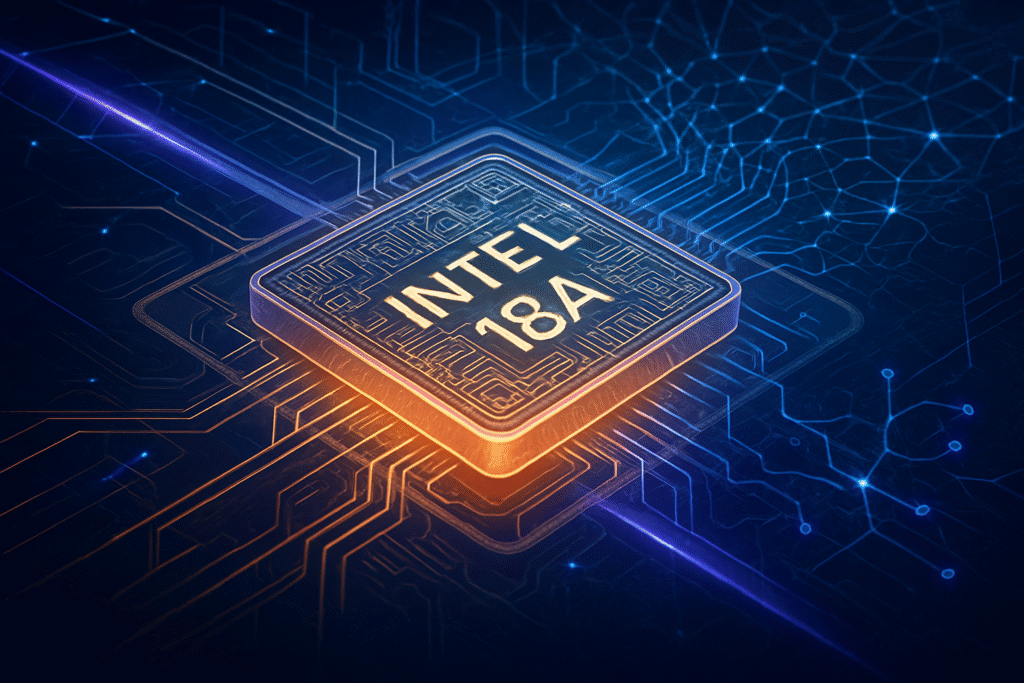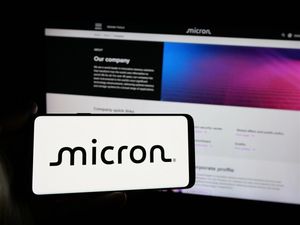
In a bold move to reclaim its lost glory and reassert leadership in semiconductor manufacturing, Intel (NASDAQ: INTC) CEO Pat Gelsinger, who led the charge until late 2024 before being succeeded by Lip-Bu Tan in early 2025, initiated an unprecedented "five nodes in four years" strategy in July 2021. This aggressive roadmap aimed to deliver five distinct process technologies—Intel 7, Intel 4, Intel 3, Intel 20A, and Intel 18A—between 2021 and 2025. This ambitious undertaking is not merely about manufacturing prowess; it's a high-stakes gamble with profound implications for Intel's competitiveness, the global semiconductor supply chain, and the accelerating development of artificial intelligence hardware. As of late 2025, the strategy appears largely on track, positioning Intel to potentially disrupt the foundry landscape and significantly influence the future of AI.
The Gauntlet Thrown: A Deep Dive into Intel's Technological Leap
Intel's "five nodes in four years" strategy represents a monumental acceleration in process technology development, a stark contrast to its previous struggles with the 10nm node. The roadmap began with Intel 7 (formerly 10nm Enhanced SuperFin), which is now in high-volume manufacturing, powering products like Alder Lake and Sapphire Rapids. This was followed by Intel 4 (formerly 7nm), marking Intel's crucial transition to Extreme Ultraviolet (EUV) lithography in high-volume production, now seen in Meteor Lake processors. Intel 3, a further refinement of EUV offering an 18% performance-per-watt improvement over Intel 4, became production-ready by the end of 2023, supporting products such as the Xeon 6 (Sierra Forest and Granite Rapids) processors.
The true inflection points of this strategy are the "Angstrom era" nodes: Intel 20A and Intel 18A. Intel 20A, expected to be production-ready in the first half of 2024, introduces two groundbreaking technologies: RibbonFET, Intel's gate-all-around (GAA) transistor architecture, and PowerVia, a revolutionary backside power delivery network. RibbonFET aims to provide superior electrostatic control, reducing leakage and boosting performance, while PowerVia reroutes power to the backside of the wafer, optimizing signal integrity and reducing routing congestion on the frontside. Intel 18A, the culmination of the roadmap, anticipated to be production-ready in the second half of 2024 with volume shipments in late 2025 or early 2026, further refines these innovations. The simultaneous introduction of RibbonFET and PowerVia, a high-risk strategy, underscores Intel's determination to leapfrog competitors.
This aggressive timeline and technological shift presented immense challenges. Intel's delayed adoption of EUV lithography put it behind rivals TSMC (NYSE: TSM) and Samsung (KRX: 005930), forcing it to catch up rapidly. Developing RibbonFETs involves intricate fabrication and precise material deposition, while PowerVia necessitates complex new wafer processing steps, including precise thinning and thermal management solutions. Manufacturing complexities and yield ramp-up are perennial concerns, with early reports (though disputed by Intel) suggesting low initial yields for 18A. However, Intel's commitment to these innovations, including being the first to implement backside power delivery in silicon, demonstrates its resolve. For its future Intel 14A node, Intel is also an early adopter of High-NA EUV lithography, further pushing the boundaries of chip manufacturing.
Reshaping the Competitive Landscape: Implications for AI and Tech Giants
The success of Intel's "five nodes in four years" strategy is pivotal for its own market competitiveness and has significant implications for AI companies, tech giants, and startups. For Intel, regaining process leadership means its internal product divisions—from client CPUs to data center Xeon processors and AI accelerators—can leverage cutting-edge manufacturing, potentially restoring its performance edge against rivals like AMD (NASDAQ: AMD). This strategy is a cornerstone of Intel Foundry (formerly Intel Foundry Services or IFS), which aims to become the world's second-largest foundry by 2030, offering a viable alternative to the current duopoly of TSMC and Samsung.
Intel's early adoption of PowerVia in 20A and 18A, potentially a year ahead of TSMC's N2P node, could provide a critical performance and power efficiency advantage, particularly for AI workloads that demand intense power delivery. This has already attracted significant attention, with Microsoft (NASDAQ: MSFT) publicly announcing its commitment to building chips on Intel's 18A process, a major design win. Intel has also secured commitments from other large customers for 18A and is partnering with Arm Holdings (NASDAQ: ARM) to optimize its 18A process for Arm-based chip designs, opening doors to a vast market including smartphones and servers. The company's advanced packaging technologies, such as Foveros Direct 3D and EMIB, are also a significant draw, especially for complex AI designs that integrate various chiplets.
For the broader tech industry, a successful Intel Foundry introduces a much-needed third leading-edge foundry option. This increased competition could enhance supply chain resilience, offer more favorable pricing, and provide greater flexibility for fabless chip designers, who are currently heavily reliant on TSMC. This diversification is particularly appealing in the current geopolitical climate, reducing reliance on concentrated manufacturing hubs. Companies developing AI hardware, from specialized accelerators to general-purpose CPUs for AI inference and training, stand to benefit from more diverse and potentially optimized manufacturing options, fostering innovation and potentially driving down hardware costs.
Wider Significance: Intel's Strategy in the Broader AI Ecosystem
Intel's ambitious manufacturing strategy extends far beyond silicon fabrication; it is deeply intertwined with the broader AI landscape and current technological trends. The ability to produce more transistors per square millimeter, coupled with innovations like RibbonFET and PowerVia, directly translates into more powerful and energy-efficient AI hardware. This is crucial for advancing AI accelerators, which are the backbone of modern AI training and inference. While NVIDIA (NASDAQ: NVDA) currently dominates this space, Intel's improved manufacturing could significantly enhance the competitiveness of its Gaudi line of AI chips and upcoming GPUs like Crescent Island, offering a viable alternative.
For data center infrastructure, advanced process nodes enable higher-performance CPUs like Intel's Xeon 6, which are critical for AI head nodes and overall data center efficiency. By integrating AI capabilities directly into its processors and enhancing power delivery, Intel aims to enable AI without requiring entirely new infrastructure. In the realm of edge AI, the strategy underpins Intel's "AI Everywhere" vision. More advanced and efficient nodes will facilitate the creation of low-power, high-efficiency AI-enabled processors for devices ranging from autonomous vehicles to industrial IoT, enabling faster, localized AI processing and enhanced data privacy.
However, the strategy also navigates significant concerns. The escalating costs of advanced chipmaking, with leading-edge fabs costing upwards of $15-20 billion, pose a barrier to entry and can lead to higher prices for advanced AI hardware. Geopolitical factors, particularly U.S.-China tensions, underscore the strategic importance of domestic manufacturing. Intel's investments in new fabs in Ireland, Germany, and Poland, alongside U.S. CHIPS Act funding, aim to build a more geographically balanced and resilient global semiconductor supply chain. While this can mitigate supply chain concentration risks, the reliance on a few key equipment suppliers like ASML (AMS: ASML) for EUV lithography remains.
This strategic pivot by Intel can be compared to historical milestones that shaped AI. The invention of the transistor and the relentless pursuit of Moore's Law have been foundational for AI's growth. The rise of GPUs for parallel processing, championed by NVIDIA, fundamentally shifted AI development. Intel's current move is akin to challenging these established paradigms, aiming to reassert its role in extending Moore's Law and diversifying the foundry market, much like TSMC revolutionized the industry by specializing in manufacturing.
Future Developments: What Lies Ahead for Intel and AI
The near-term future will see Intel focused on the full ramp-up of Intel 18A, with products like the Clearwater Forest Xeon processor and Panther Lake client CPU expected to leverage this node. The successful execution of 18A is a critical proof point for Intel's renewed manufacturing prowess and its ability to attract and retain foundry customers. Beyond 18A, Intel has already outlined plans for Intel 14A, expected for risk production in late 2026, and Intel 10A in 2027, which will be the first to use High-NA EUV lithography. These subsequent nodes will continue to push the boundaries of transistor density and performance, crucial for the ever-increasing demands of AI.
The potential applications and use cases on the horizon are vast. With more powerful and efficient chips, AI will become even more ubiquitous, powering advancements in generative AI, large language models, autonomous systems, and scientific computing. Improved AI accelerators will enable faster training of larger, more complex models, while enhanced edge AI capabilities will bring real-time intelligence to countless devices. Challenges remain, particularly in managing the immense costs of R&D and manufacturing, ensuring competitive yields, and navigating a complex geopolitical landscape. Experts predict that if Intel maintains its execution momentum, it could significantly alter the competitive dynamics of the semiconductor industry, fostering innovation and offering a much-needed alternative in advanced chip manufacturing.
Comprehensive Wrap-Up: A New Chapter for Intel and AI
Intel's "five nodes in four years" strategy, spearheaded by Pat Gelsinger and now continued under Lip-Bu Tan, marks a pivotal moment in the company's history and the broader technology sector. The key takeaway is Intel's aggressive and largely on-track execution of an unprecedented manufacturing roadmap, featuring critical innovations like EUV, RibbonFET, and PowerVia. This push is not just about regaining technical leadership but also about establishing Intel Foundry as a major player, offering a diversified and resilient supply chain alternative to the current foundry leaders.
The significance of this development in AI history cannot be overstated. By potentially providing more competitive and diverse sources of cutting-edge silicon, Intel's strategy could accelerate AI innovation, reduce hardware costs, and mitigate risks associated with supply chain concentration. It represents a renewed commitment to Moore's Law, a foundational principle that has driven computing and AI for decades. The long-term impact could see a more balanced semiconductor industry, where Intel reclaims its position as a technological powerhouse and a significant enabler of the AI revolution.
In the coming weeks and months, industry watchers will be closely monitoring the yield rates and volume production ramp of Intel 18A, the crucial node that will demonstrate Intel's ability to deliver on its ambitious promises. Design wins for Intel Foundry, particularly for high-profile AI chip customers, will also be a key indicator of success. Intel's journey is a testament to the relentless pursuit of innovation in the semiconductor world, a pursuit that will undoubtedly shape the future of artificial intelligence.
This content is intended for informational purposes only and represents analysis of current AI developments.
TokenRing AI delivers enterprise-grade solutions for multi-agent AI workflow orchestration, AI-powered development tools, and seamless remote collaboration platforms.
For more information, visit https://www.tokenring.ai/.






